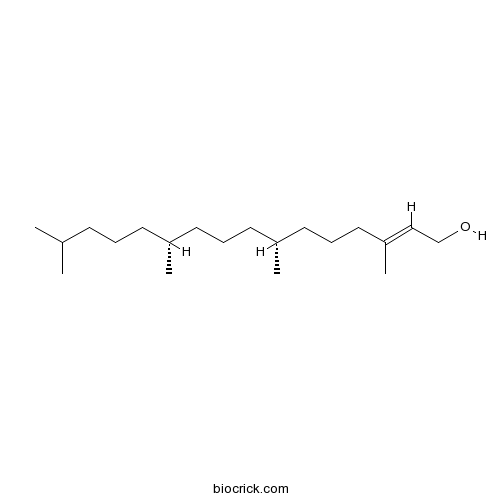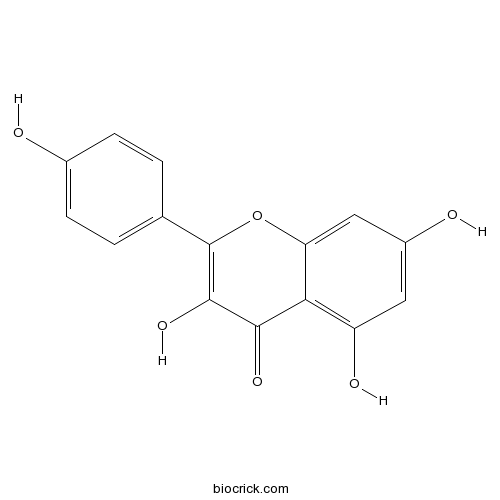Tamarix chinensis
Tamarix chinensis
1. The products in our compound library are selected from thousands of unique natural products; 2. It has the characteristics of diverse structure, diverse sources and wide coverage of activities; 3. Provide information on the activity of products from major journals, patents and research reports around the world, providing theoretical direction and research basis for further research and screening; 4. Free combination according to the type, source, target and disease of natural product; 5. The compound powder is placed in a covered tube and then discharged into a 10 x 10 cryostat; 6. Transport in ice pack or dry ice pack. Please store it at -20 °C as soon as possible after receiving the product, and use it as soon as possible after opening.
Natural products/compounds from Tamarix chinensis
- Cat.No. Product Name CAS Number COA
-
BCN1673
Phytol150-86-7
Instructions

-
BCN5653
Kaempferol520-18-3
Instructions

-
BCN5658
Apigenin520-36-5
Instructions

[Water use strategy of Tamarix chinensis during a drought year in the coastal wetlands of the Yellow River Delta, China].[Pubmed: 29745141]
None
Demographic expansion of two Tamarix species along the Yellow River caused by geological events and climate change in the Pleistocene.[Pubmed: 29311687]
The geological events and climatic fluctuations during the Pleistocene played important roles in shaping patterns of species distribution. However, few studies have evaluated the patterns of species distribution that were influenced by the Yellow River. The present work analyzed the demography of two endemic tree species that are widely distributed along the Yellow River, Tamarix austromongolica and Tamarix chinensis, to understand the role of the Yellow River and Pleistocene climate in shaping their distribution patterns. The most common chlorotype, chlorotype 1, was found in all populations, and its divergence time could be dated back to 0.19 million years ago (Ma). This dating coincides well with the formation of the modern Yellow River and the timing of Marine Isotope Stages 5e-6 (MIS 5e-6). Bayesian reconstructions along with models of paleodistribution revealed that these two species experienced a demographic expansion in population size during the Quaternary period. Approximate Bayesian computation analyses supported a scenario of expansion approximately from the upper to lower reaches of the Yellow River. Our results provide support for the roles of the Yellow River and the Pleistocene climate in driving demographic expansion of the populations of T. austromongolica and T. chinensis. These findings are useful for understanding the effects of geological events and past climatic fluctuations on species distribution patterns.
Salinicola tamaricis sp. nov., a heavy-metal-tolerant, endophytic bacterium isolated from the halophyte Tamarix chinensis Lour.[Pubmed: 28604335]
A Gram-stain-negative, rod-shaped bacterium, strain F01T, was isolated from leaves of Tamarix chinensis Lour. The isolate grew optimally at 30 °C, at pH 7.0 and with 5.0 % (w/v) NaCl, and showed a high tolerance to manganese, lead, nickel, ferrous ions and copper ions. The major fatty acids were C18 : 1ω7c and C16 : 0, and the predominant respiratory quinone was Q-9. Polar lipids were dominated by diphosphatidylglycerol, phosphatidylethanolamine, phosphatidylglycerol, unidentified aminoglycolipids and phospholipids. The DNA G+C content was 65.8 %. Based on multilocus phylogenetic analysis, strain F01T belonged to the genus Salinicola, with highest 16S rRNA gene sequence similarity to Salinicola peritrichatus CGMCC 1.12381T (97.7 %). The level of DNA-DNA hybridization between strain F01T and closely related Salinicola strains was well below 70 %. According to the phenotypic, genetic and chemotaxonomic data, strain F01T is considered to represent a novel species in the genus Salinicola, for which the name Salinicola tamaricis sp. nov. is proposed. The type strain is F01T (=CCTCC AB 2015304T=KCTC 42855T).
Experimental study on water transport observations of desert riparian forests in the lower reaches of the Tarim River in China.[Pubmed: 28283759]
Studying the water use processes of desert riparian vegetation in arid regions and analyzing the response and adaptation strategies of plants to drought stress are of great significance for developing ecological restoration measures. Based on field monitoring and test analyses of physiological ecological indicators of dominant species (Populus euphratica and Tamarix chinensis) in the desert riparian forest in the lower reaches of the Tarim River, the water relations of P. euphratica and T. chinensis under drought stress are discussed and some water use strategies put forward. The results show that (1) concerning plant water uptake, desert riparian forests depend mainly on groundwater to survive under long-term water stress. (2) Concerning plant water distribution, the survival of P. euphratica and nearby shallow root plants is mainly due to the hydraulic lift and water redistribution of P. euphratica under drought stress. (3) Concerning plant water transport, P. euphratica sustains the survival of competitive and advantageous branches by improving their ability to acquire water while restraining the growth of inferior branches. (4) Concerning plant transpiration, the sap flow curves of daily variations of P. euphratica and T. chinensis were wide-peak sin and narrower-peak respectively. T. chinensis has better environmental adaptability.
Using Risk Assessment and Habitat Suitability Models to Prioritise Invasive Species for Management in a Changing Climate.[Pubmed: 27768758]
Accounting for climate change in invasive species risk assessments improves our understanding of potential future impacts and enhances our preparedness for the arrival of new non-native species. We combined traditional risk assessment for invasive species with habitat suitability modeling to assess risk to biodiversity based on climate change. We demonstrate our method by assessing the risk for 15 potentially new invasive plant species to Alberta, Canada, an area where climate change is expected to facilitate the poleward expansion of invasive species ranges. Of the 15 species assessed, the three terrestrial invasive plant species that could pose the greatest threat to Alberta's biodiversity are giant knotweed (Fallopia sachalinensis), tamarisk (Tamarix chinensis), and alkali swainsonpea (Sphaerophysa salsula). We characterise giant knotweed as 'extremely invasive', with 21 times the suitable habitat between baseline and future projected climate. Tamarisk is 'extremely invasive' with a 64% increase in suitable habitat, and alkali swainsonpea is 'highly invasive' with a 21% increase in suitable habitat. Our methodology can be used to predict and prioritise potentially new invasive species for their impact on biodiversity in the context of climate change.
Study of the water transportation characteristics of marsh saline soil in the Yellow River Delta.[Pubmed: 27664758]
One-dimensional soil column water infiltration and capillary adsorption water tests were conducted in the laboratory to study the water transportation characteristics of marsh saline soil in the Yellow River Delta, providing a theoretical basis for the improvement, utilization and conservation of marsh saline soil. The results indicated the following: (1) For soils with different vegetation covers, the cumulative infiltration capacity increased with the depth of the soil layers. The initial infiltration rate of soils covered by Suaeda and Tamarix chinensis increased with depth of the soil layers, but that of bare soil decreased with soil depth. (2) The initial rate of capillary rise of soils with different vegetation covers showed an increasing trend from the surface toward the deeper layers, but this pattern with respect to soil depth was relatively weak. (3) The initial rates of capillary rise were lower than the initial infiltration rates, but infiltration rate decreased more rapidly than capillary water adsorption rate. (4) The two-parameter Kostiakov model can very well-simulate the changes in the infiltration and capillary rise rates of wetland saline soil. The model simulated the capillary rise rate better than it simulated the infiltration rate. (5) There were strong linear relationships between accumulative infiltration capacity, wetting front, accumulative capillary adsorbed water volume and capillary height.


